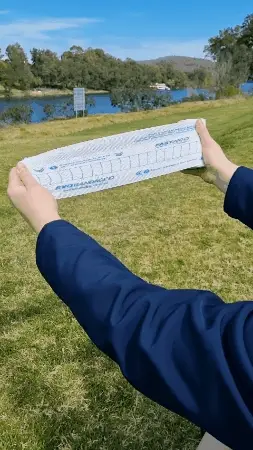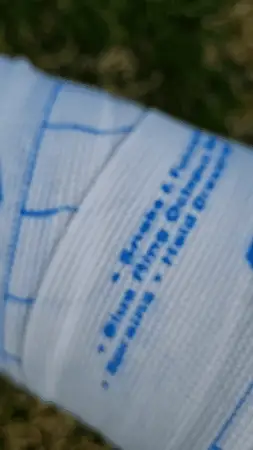 It's snake season! And what better time than now for a refresher on being snake prepared for when you're heading into the great outdoors?
It's snake season! And what better time than now for a refresher on being snake prepared for when you're heading into the great outdoors?
As we head into snake season, what are the top tips for snake bite prevention?
Anytime we are outside in the warmer months we must be aware of the risks that we may encounter snakes at any time, either at home or simply walking through the bush. Some simple steps we can take to ensure that we stay safe over the warmer months are very easy to follow.
- Rubbish or areas that have laid dormant over the winter months pose a great risk as this may be where snakes have taken refuge through winter, so be mindful when reaching into these areas.
- If outside or bushwalking, wearing protective clothing such as long pants and long sleeve shirts not only protect us from the sun but can also protect us from snake bites. Ensure also that you make noise around these areas to help scare off snakes.
- If you do encounter a snake, remember never try to touch, move or kill them (they are protected), as the majority of people who are bitten are because of these actions.
- Remember that prevention is a much safer option than dealing with a bite. We would recommend that you should always have a PIT Bandage (such as a FastAid Snake Bite Bandage) available, as these bandages will make bandaging a victim who has been bitten much easier. These bandages also ensure the correct tension of the bandage that is applied to a snake bite, as when this is done correctly, will achieve a better outcome for the individual who was bitten.
In the unfortunate scenario you get bitten by a snake, what should you do?
- If a person is bitten, they need to keep still and lay down immediately once the area is deemed safe from the snake leaving.
- Do not wash the wound site, as they can swab the area to identify the snake.
- Do not apply tourniquets.
- The person who has been bitten needs to have a pressure bandage applied over the bite site, this can be done with either a bandage if available, otherwise using clothing or whatever the patient can find to apply pressure over the bite site.
- Once this bandage has been done a second bandage needs to be applied to the limb that has been bitten, starting from the toes up to the hips if bitten on the leg, or from the fingers up to the arm pits if bitten on the arm. The bandage needs to go all the way up the limb and then back down until the bandage runs out.
- When wrapping the bandage, it needs to be firm, as you would do for a sprained ankle. It can be checked on tightness by checking the patients’ fingers or toes by pressing on these, if they turn white and then return to normal colour in less than 3 seconds the bandage is not too tight.
- If you have a PIT Pressure Immobilisation Bandage (such as the FastAid Snake Bite Bandage) this will make it much easier to apply pressure to the right level as the indicators will indicate on how tight the bandage will need to be.
- If possible, you can mark the area on the bandage of the bite site, as well as a time of when the patient was bitten.
- You can also splint the leg or arm if you have a splint, or you can make a splint. The limbs as well as the person need to stay still and not move.
- They should then call 000 and have them transported to the hospital preferably by Ambulance. If they are going to be transported by car, the car needs to be bought to the patient, as asking them to walk to a vehicle will speed up the movement of the venom.
What should you do if you get bitten, but you've left your first aid kit in your vehicle / boat?
If you have been bitten and do not have a bandage or First Aid kit available you may need to try and attract attention without moving, as movement such as walking, will speed up the venom as it moves through the lymphatic system and the lymphatic system is driven by muscle movement. The number one rule is about staying still and applying a pressure bandage to the limb that has been bitten, using clothes or whatever you have available is the key, doing nothing could lead to disaster. Getting help while staying still is the priority. You should always carry a phone, as you're likely to be able to access help without having to move.
Do you have any Do's and Don'ts when it comes to snakes and snake prone environments?
- Do not try and catch the snake or trap the snake as you may be bitten again.
- Do not apply a tourniquet to the site as this will cut off the blood supply to the limb.
- Do not cut the bite site and try and suck the venom out.
- Do try and always carry a bandage on you (like the FastAid Snake Bite Bandage) when bushwalking.
- Do try and make noise when walking through the bush as this will help move snakes on.
- Do lay still and always carry a phone with you when bushwalking so you can call for help if needed.
- Do try to always wear long pants when bushwalking as this can help reduce the risk of being bitten by a snake.
For further information, view FastAid's chat with a first aid expert about this topic here







